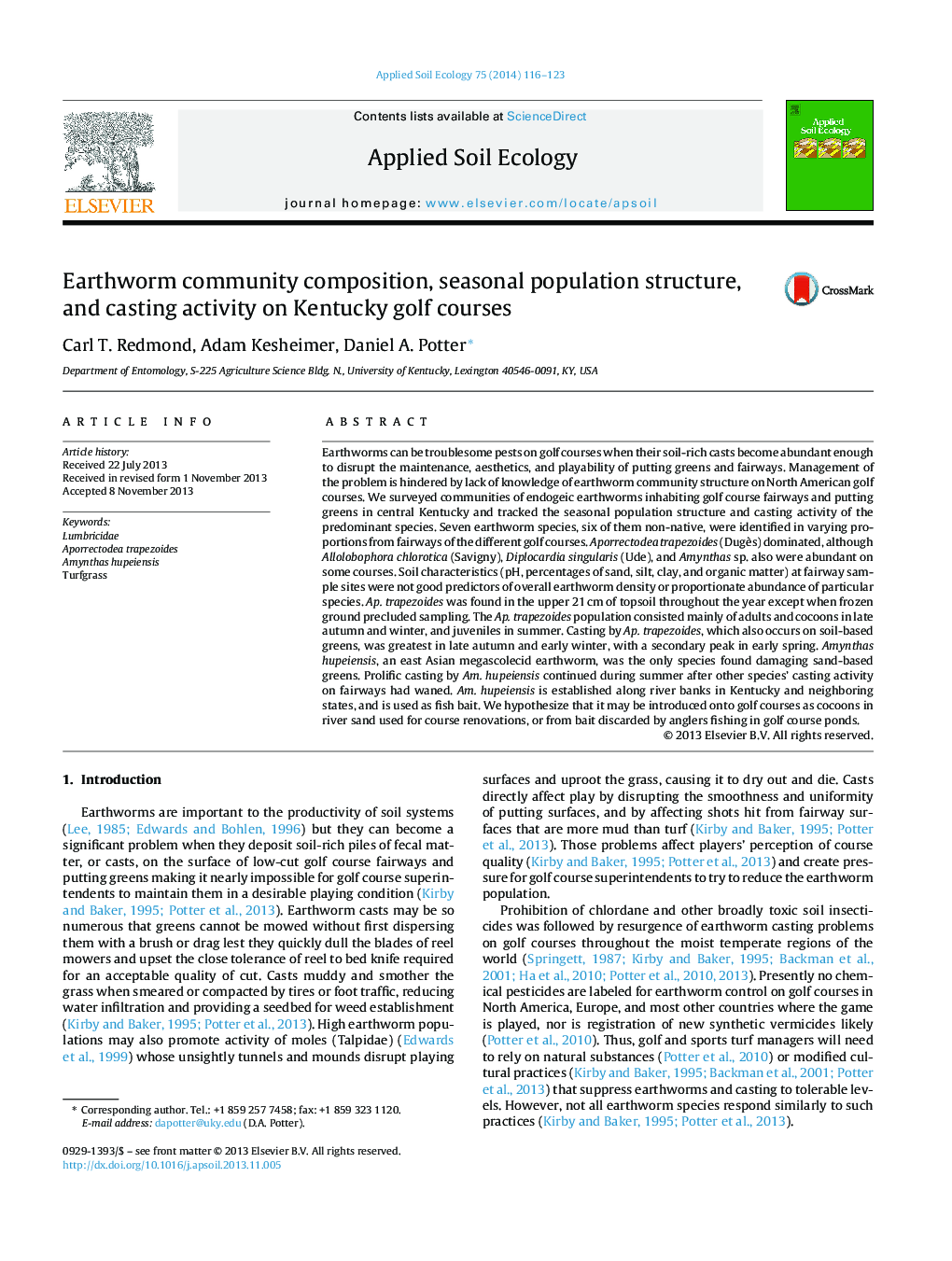| کد مقاله | کد نشریه | سال انتشار | مقاله انگلیسی | نسخه تمام متن |
|---|---|---|---|---|
| 4382286 | 1617808 | 2014 | 8 صفحه PDF | دانلود رایگان |
• Excessive earthworm casts disrupt maintenance and playability of golf courses.
• Earthworm community structure on golf courses in Kentucky, USA was surveyed.
• Seasonal population structure and casting are reported for Aporrectodea trapezoides.
• Amynthas hupeiensis was particularly damaging to sand-based putting greens.
• We hypothesize it may be introduced as cocoons in river sand used for renovations.
Earthworms can be troublesome pests on golf courses when their soil-rich casts become abundant enough to disrupt the maintenance, aesthetics, and playability of putting greens and fairways. Management of the problem is hindered by lack of knowledge of earthworm community structure on North American golf courses. We surveyed communities of endogeic earthworms inhabiting golf course fairways and putting greens in central Kentucky and tracked the seasonal population structure and casting activity of the predominant species. Seven earthworm species, six of them non-native, were identified in varying proportions from fairways of the different golf courses. Aporrectodea trapezoides (Dugès) dominated, although Allolobophora chlorotica (Savigny), Diplocardia singularis (Ude), and Amynthas sp. also were abundant on some courses. Soil characteristics (pH, percentages of sand, silt, clay, and organic matter) at fairway sample sites were not good predictors of overall earthworm density or proportionate abundance of particular species. Ap. trapezoides was found in the upper 21 cm of topsoil throughout the year except when frozen ground precluded sampling. The Ap. trapezoides population consisted mainly of adults and cocoons in late autumn and winter, and juveniles in summer. Casting by Ap. trapezoides, which also occurs on soil-based greens, was greatest in late autumn and early winter, with a secondary peak in early spring. Amynthas hupeiensis, an east Asian megascolecid earthworm, was the only species found damaging sand-based greens. Prolific casting by Am. hupeiensis continued during summer after other species’ casting activity on fairways had waned. Am. hupeiensis is established along river banks in Kentucky and neighboring states, and is used as fish bait. We hypothesize that it may be introduced onto golf courses as cocoons in river sand used for course renovations, or from bait discarded by anglers fishing in golf course ponds.
Journal: Applied Soil Ecology - Volume 75, March 2014, Pages 116–123
